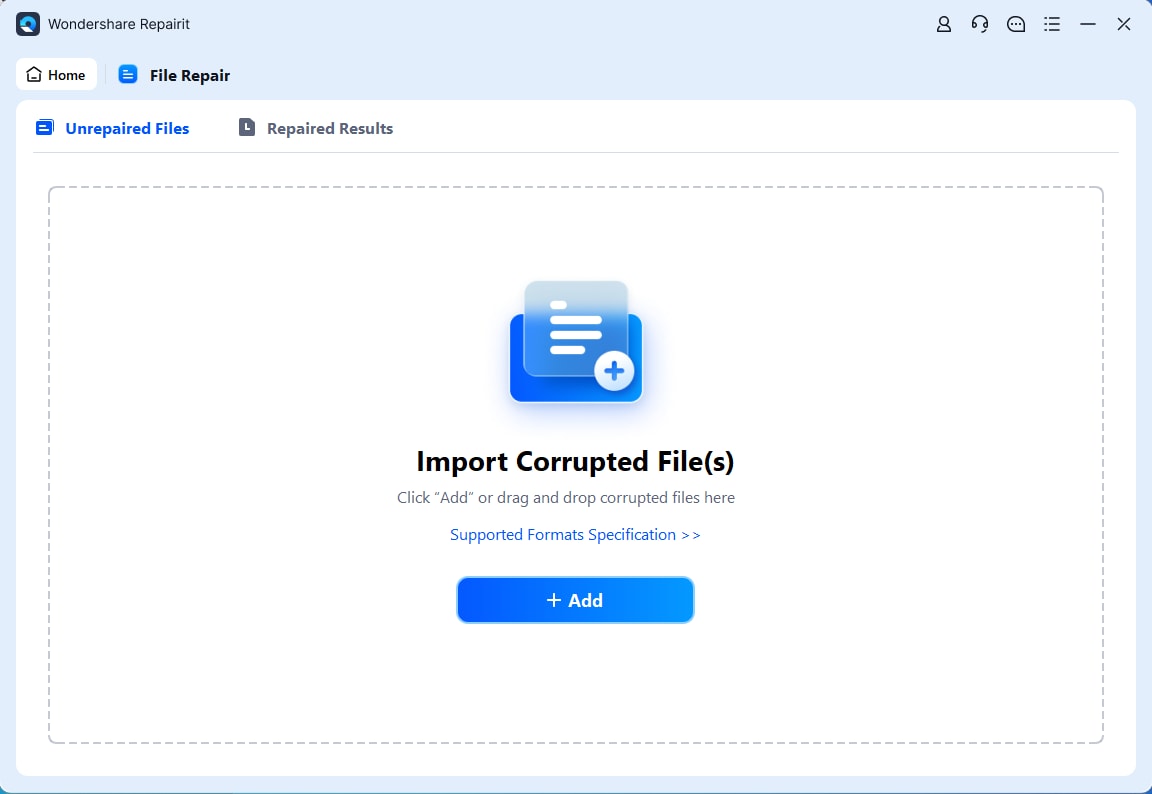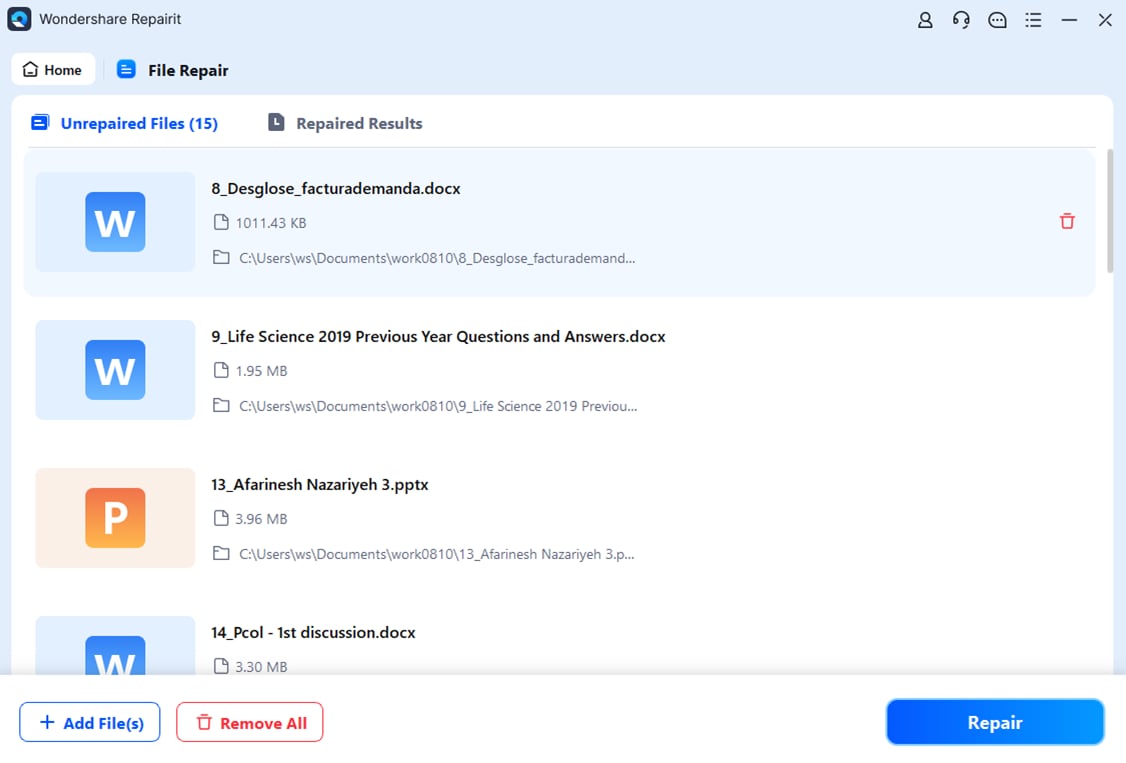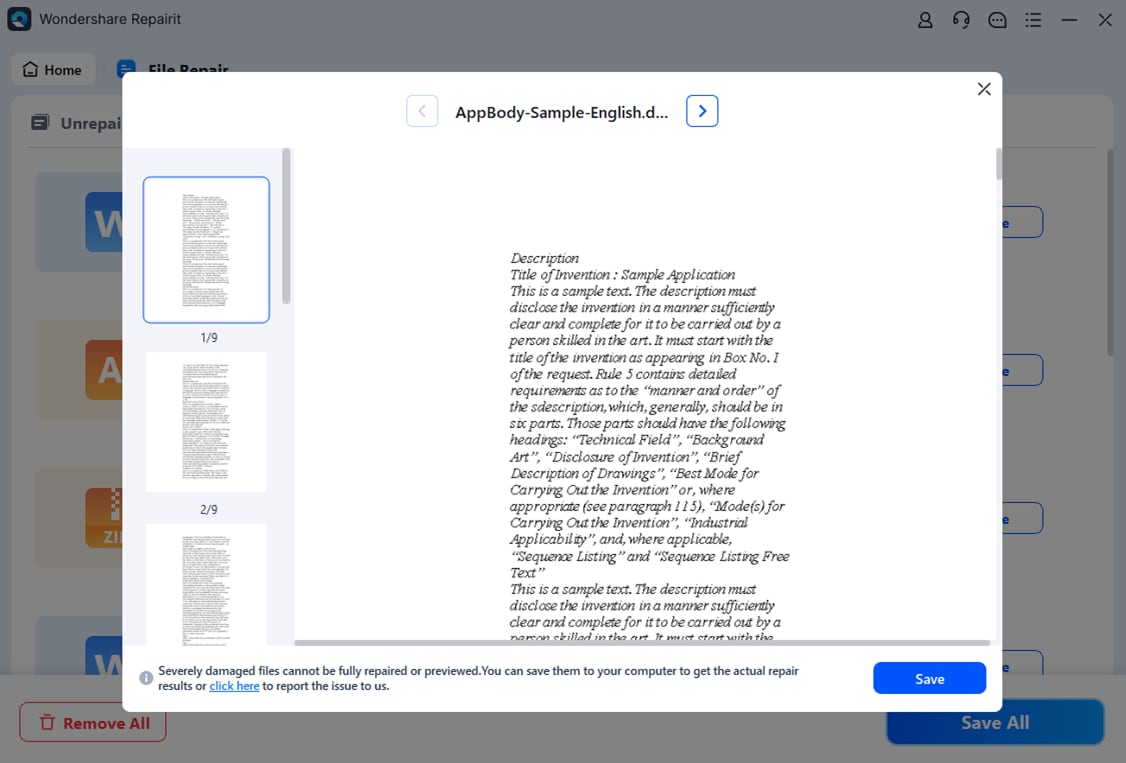So, you've just connected your external hard drive or USB flash drive to your computer. But instead of accessing your precious files, you're greeted with a frustrating error message: "The disc structure is corrupted and unreadable". This dreaded error can make your heart sink, leaving you wondering if you'll ever be able to retrieve your data again.
No matter what is the situation, the "disc structure is corrupted and unreadable" error can be a nightmare for anyone who values their data. In this article, we have listed 7 simple solutions to resolve the issue. Let’s get started.
In this article
-
- Method 1. Run CHKDSK on the External Hard Drive
- Method 2. Unplug and Re-plug the Corrupted/Unreadable Device
- Method 3: Format to Fix Corrupted or Unreadable Drive
- Method 4: Use Repairit to Repair Corrupted Files
- Method 5: Scan for Viruses
- Method 6: Run Hardware and Device Troubleshooter
- Method 7: Assign a File System to the Hard Drive in disc Management
Part 1: What is the "the disc structure is corrupted and unreadable" Error?
The "disc structure is corrupted and unreadable" error typically occurs when your computer is unable to recognize the file system or structure of the connected storage device. This can happen due to various reasons, such as physical damage to the disc, software corruption, abrupt disconnection during file transfer, or even a virus or malware infection.
When this error occurs, your computer essentially cannot make sense of the data stored on the disc, rendering it inaccessible. It's as if the disc is speaking a language your computer doesn't understand, resulting in a communication breakdown.
Part 2: 7 Ways to Fix "The disc Structure Is Corrupted and Unreadable" Error
While the "The disc structure is corrupted and unreadable" error can be daunting, fear not! There are several methods you can try to potentially resolve the issue and regain access to your valuable data. Let's explore these solutions one by one.
Method 1. Run CHKDSK on the External Hard Drive
The CHKDSK (Check disc) utility is a built-in tool in Windows that can help detect and repair disc errors, including issues with the file system structure. By running CHKDSK with the appropriate switches (/f for fixing errors, /r for locating bad sectors, and /x for dismounting the drive), you're instructing Windows to thoroughly scan the corrupted drive and repair issues (if found).
This process can help restore the integrity of the file system structure, potentially resolving the "disk structure is corrupted and unreadable" error and allowing you to access your data again.
Here's how to use it:
Step 1: Open the Command Prompt as an administrator by searching for "cmd" in the Start menu, right-clicking on the Command Prompt result, and selecting "Run as administrator."

Step 2: In the Command Prompt window, type "chkdsk [drive letter]: /f /r /x" (replacing "[drive letter]" with the letter assigned to your corrupted drive), and press Enter.

Step 3: The CHKDSK utility will scan the drive for errors and attempt to fix any issues it finds.
Method 2. Unplug and Re-plug the Corrupted/Unreadable Device
When you unplug and re-plug the corrupted drive, you're essentially forcing your computer to re-establish the communication link and remount the device.
This process can clear any temporary glitches or hiccups that may have caused the error, allowing your computer to recognize the drive's file system structure correctly.
Step 1: Safely eject the corrupted drive from your computer by right-clicking on the drive icon in File Explorer and selecting "Eject."

Step 2: Once the drive is safely removed, wait a few seconds and then reconnect it to your computer. Windows should now attempt to recognize and mount the drive again, hopefully without the error.
Method 3: Format to Fix Corrupted or Unreadable Drive
Warning: Formatting a drive will erase all data on the disc. Only proceed with this method if you have a backup of your important data or if recovering the data is not a concern.
By formatting the corrupted or unreadable drive, you're eliminating any existing file system errors or corruption that may be causing the "the disk structure is corrupted and unreadable" error.
However, it's important to note that formatting will erase all data on the drive, so this method should only be used if you have a backup of your important data or if recovering the data is not a concern.
Step 1: Open the disc Management utility by searching for "Create and format hard disc partitions" in the Start menu and selecting the corresponding result.

Step 2: In the disc Management window, right-click on the corrupted drive and select "Format."
In the Format dialog box, choose the desired file system (e.g., NTFS or exFAT) and allocation unit size, and click "OK" to begin the formatting process.

Step 3: After the formatting is complete, your drive should be accessible again, although all previous data will be lost.
Method 4: Use Repairit to Repair Corrupted Files
If the previous methods haven't worked, and you're willing to invest in a third-party tool? Wondershare Repairit can be a powerful solution for recovering data from corrupted or unreadable drives.
Repairit works by scanning the corrupted drive, identifying any issues with the file system structure, and attempting to repair or reconstruct the damaged or corrupted files.
Step 1: Download and install Repairit on your computer. Launch the program on your PC. Hit the “+Add” button to import the corrupted files.

Step 2: Repairit will now get to work and will start scanning the corrupted files to repair them. After the results are listed on the screen, hit the “Repair” button.

Step 3: Once done, preview the results and save the files on your computer at the desired location.

Use Repairit to Repair Corrupted Files Now

Method 5: Scan for Viruses
In some cases, the "disc structure is corrupted and unreadable" error can be caused by a virus or malware infection. Running a thorough virus scan can help identify and remove any malicious software that may be interfering with your drive's file system.
Step 1: Install and run a reputable antivirus software on your computer. Perform a full system scan, including any connected external drives or USB devices.

Step 2: If the antivirus software detects and removes any viruses or malware, try reconnecting your drive to see if the issue is resolved.
Method 6: Run Hardware and Device Troubleshooter
Windows includes a built-in Hardware and Device Troubleshooter that can help diagnose and resolve various issues related to connected devices, including external drives. Running this troubleshooter can be helpful in situations where the "disk structure is corrupted and unreadable" error is caused by a hardware or driver-related problem.
The Hardware and Device Troubleshooter works by scanning your system and connected devices, identifying any potential issues or conflicts, and attempting to resolve them automatically.
Step 1: Open the Start menu and search for "troubleshoot settings." In the Troubleshoot settings window, click on "Other troubleshooters."

Step 2: Pick any troubleshooter listed on the screen. Click the ""Run the troubleshooter"" button placed next to it.
Step 3: Follow the prompts to allow the troubleshooter to scan for and attempt to resolve any issues with your connected devices.
Method 7: Assign a File System to the Hard Drive in disc Management
If none of the above methods work, you can try assigning a file system to the corrupted drive manually in disc Management. This can sometimes help Windows recognize and mount the drive correctly.
Step 1: Open the disc Management on your PC. Right-click on the corrupted drive and select "Format."
Step 2: In the Format dialog box, choose the desired file system (e.g., NTFS or exFAT) and allocation unit size.

Step 3: Check the ""Quick Format"" option to speed up the process. Click "OK" to format the drive with the selected file system.
After trying one or more of these methods, your corrupted or unreadable drive should hopefully become accessible again, allowing you to retrieve your valuable data or use the drive as intended.
Part 3: How to Protect Device from "Structure Corrupted or Unreadable" Error?
The methods outlined above can help resolve the "disc structure is corrupted and unreadable" error, it's always better to prevent such issues from occurring in the first place. Here are some tips to help protect your devices and data:
- Safely eject external drives: Always safely eject or unmount external drives before disconnecting them from your computer. This helps prevent data corruption and ensures that all operations are completed before the drive is removed.
- Use high-quality storage devices: Invest in reliable and reputable brands of external hard drives or USB flash drives. Cheaper, low-quality devices are more prone to failure and data corruption.
- Keep backups: Regularly back up important data to multiple locations, such as an external hard drive, cloud storage, or another computer. This way, if one device fails or becomes corrupted, you have a backup to fall back on.
- Handle devices with care: Avoid dropping, bumping, or exposing your storage devices to extreme temperatures, moisture, or magnetic fields, as these can cause physical damage and data corruption.
- Perform regular maintenance: Periodically run disc Check (CHKDSK) and defragmentation tools to identify and fix any file system errors or fragmentation issues on your drives.
Conclusion
The "disc structure is corrupted and unreadable" error can be a frustrating and anxiety-inducing experience, especially when your precious data is at stake. However, by following the methods outlined in this article, you have a better chance of resolving the issue and regaining access to your files.
FAQ
-
How to fix a corrupted and unreadable drive?
To fix a corrupted and unreadable drive, you can try running the CHKDSK utility, unplugging and re-plugging the device, formatting the drive (with data loss), using third-party repair tools like Repairit, scanning for viruses, running the Hardware and Device Troubleshooter, or assigning a file system to the drive in disc Management. -
Why the error "disc structure is corrupted and unreadable" occurs?
This error can occur due to various reasons, including physical damage to the disc, software corruption, abrupt disconnection during file transfer, virus or malware infection, or issues with the file system or disc structure. -
How to clean a disc?
To clean a disc, you can use the CHKDSK utility to scan for and repair errors, or format the disc to wipe it clean and start fresh. However, formatting will result in data loss, so it's essential to back up any important data beforehand.


 ChatGPT
ChatGPT
 Perplexity
Perplexity
 Google AI Mode
Google AI Mode
 Grok
Grok

